Dog with traumatic past has a bright future at home
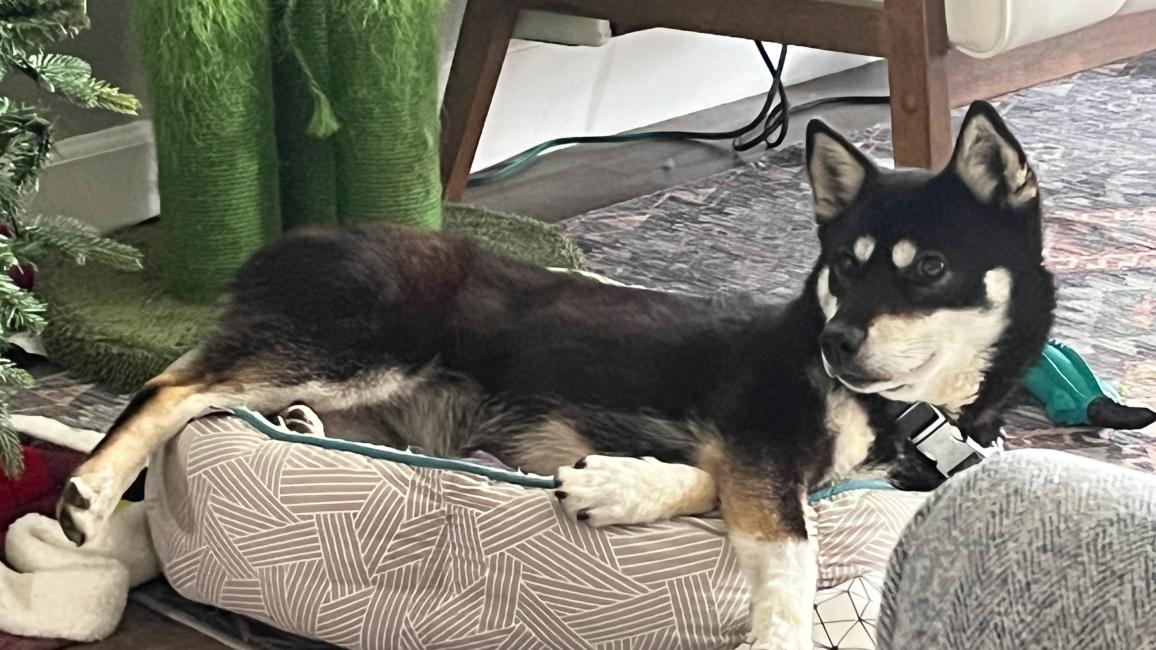
When she thinks no one is looking, Hazel can be a bit of a goofball. She likes to rub her face in bushes and roll around until her black fur is covered in sparkly flecks of sand and dirt. She might even dip her back toes in the pool and splash around a little bit. As soon as she notices someone is watching, though, she’s right back to Little Miss Serious.
And that – those moments of uninhibited joy followed by the almost comical return to stoicism – is a far cry from what Hazel’s life used to be. And what it could have been.
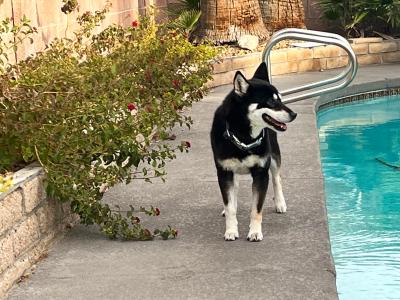
Before she was even a year old, Hazel had seen and experienced things no dog should ever have to go through. She was a puppy at a meat market, with little to no positive human interaction. So it’s no surprise that, even after she was rescued from that situation by Humane Society International, Hazel found it impossible to relax.
When she arrived at Best Friends Animal Sanctuary, Hazel wouldn’t even eat in front of people. She didn’t want to be touched, and she wouldn’t walk on a leash. She’d pace in circles as though stuck in a loop whenever someone was nearby, and the only time she was able to slow down and take a breath was when she thought it was just her and her doggy roommate.
But slowly, with time and patience from her caregivers – and support from her confident canine companions – Hazel started to move forward. She learned to chill on a couch in front of the TV, and could eat while her caregivers were within her line of sight. She might even accept a head-scratch or small back massage when she was really in the zone. She still held on to a lot of anxiety, but everyone who knew Hazel was rooting for her, looking for the family who would come along and love her just the way she was.
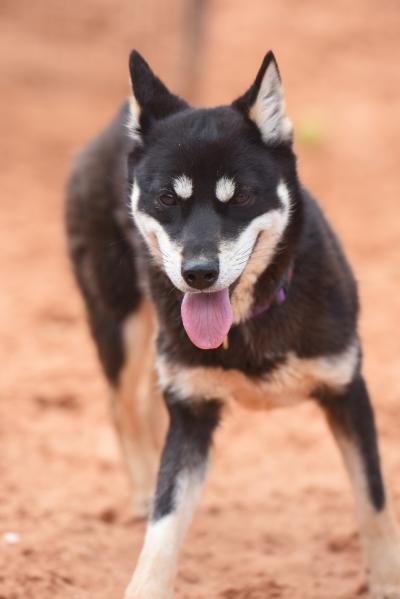
The first night of the rest of her life
University professors Drs. Steven Payne and Marie-Odile Fortier had been talking about adopting a second dog, to give the pooch they’d adopted the year previously, Kimpton, a friend. He got along with their cats just fine, but seemed like he could use someone more his size and speed to pal around with. They knew exactly what they were looking for, too: an adult dog with some sort of special medical or behavioral need.
“We’ve been involved in rescue for a long time, and we’re drawn to more special-needs cases,” explains Steven. “I actually have a Ph. D. in behavioral psychology, and specialize in animal behavior – especially dogs and cats. So it’s kind of right up my alley.”
And so, since it was the end of the semester and he wanted to get out of town to do some grading (while also checking out potential new furry family members), Steven packed up and headed for Kanab, Utah, just fifteen minutes south of the Sanctuary. He booked a room at the Best Friends Roadhouse and Mercantile, signed up for some volunteer shifts at Dogtown, and got to work.
[Front row seat for a scared dog’s transformation]
It wasn’t long before he saw Hazel, and learned her story from her caregivers. She’d been passed over time and again by adopters, due to her anxieties and general avoidance of people, but Steven knew that just meant she needed an understanding home even more. He asked about taking her on a sleepover, and that evening, her caregivers helped load Hazel into her travel kennel and into his car.
“She spent the night in the carrier,” Steven says. “She never left it the whole night. She wasn’t hunched up and nervous – she fell asleep just fine. But I lay down on the floor next to her, so she could at least get used to me being there.”
By the morning, it was a done deal. Steven says he went back to the Sanctuary to finish up his volunteer shifts, and he adopted Hazel that afternoon. When it was time to leave and head back home to Las Vegas, there were four extra paws in the car – along with a GPS collar and Hazel’s favorite stroller, since she wasn’t walking on a leash, yet.
Learning the ropes – and the leash
As soon as they got home with Hazel, Steven took her carrier to the back yard so she could meet Kimpton. He was excited to see another dog, and his presence seemed to help Hazel ease into her new surroundings. They hit it off right away, and soon Hazel was following Kimpton’s lead in all things home-living. She’d visited a caregiver’s home before, but this was her first time living in one, so there were a lot of ropes to learn.
Steven and Marie-Odile took it slow with Hazel. They didn’t push her into interacting, letting her have all the time and space she needed to warm up to her new home and family. And within the first few days, but still very gently and slowly, Hazel let them pet her. She started following them from room to room, always keeping a bit of distance but never straying too far away.
At bedtime, when her new people climb into bed and Kimpton curls up on the couch in their room, Hazel settles down on the rug nearby with a blanket. Even if she’s not a cuddler, Steven says, she still seemed to like being with her family.
Hazel’s favorite thing, though, is her walks. She learned quickly that her stroller was kept in the garage, so when Steven headed in that direction, she was right at his heels, eager to hop in and go. “We were doing walks with her stroller, so I was just putting her leash on and getting her used to wearing it while we were out,” Steven says. “We use one of those English collars that’s kind of like a slip-lead, but thicker and more comfortable… so it takes me 10 seconds instead of the 25 minutes it used to take.”
[Scared mama dog transforms into social Butterfly]
With time, Hazel had mostly gotten used to having the leash go on over her head, and she knew it meant she was heading outside for a stroll. But her reaction to her first stroller-free walk was still a surprise.
She was perfect. She kept right up next to Steven and Kimpton, and even when her doggy brother started pulling on his leash excitedly to check something out, Hazel remained calm. “I’ve never worked with a dog who leash walks as well as her. Ever,” says Steven, and then laughs; “Even when while Kimpton’s going crazy, she’s just a perfect angel. You’d never expect that he was the one who is the experienced walker.”
They went on walks all over the neighborhood, exploring every street and corner, and going home from different directions each time so that Hazel would always know her way back. And she enjoyed every second of it.
At home, her old habit of pacing and circling has even slowed down. While, at first, her GPS collar had tracked her as walking nearly 100 miles in a day just from her pacing, now Hazel can relax. She still goes in circles, occasionally (mostly when she sees a new person), but instead of compulsively traveling in one direction over and over, she can pull herself out of that spiral and turn the other direction, or stop altogether.
All of that stress she’d been carrying for so long has finally started to melt away.
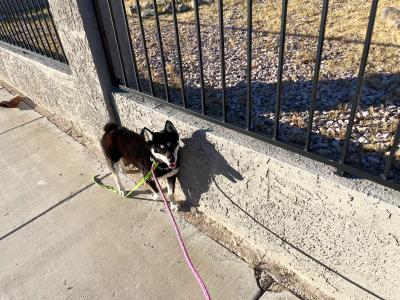
A happy home life
These days, Hazel seems like she’s pretty settled into her new home. She stretches out on dog beds, grumbles at the cats when they rub up against her, and still finds time to be silly (again, when she thinks no one is watching). She’s even learned how to let Steven and Marie-Odile know when she wants to go out, standing by the back door and giving them “the look.”
They’ve also discovered Hazel’s special fondness for music. “We play music in the house a lot, and she will kind of bounce a little bit to it, or it will calm her down,” Steven says. “Sometimes she’ll only eat if we have music playing. She likes all kinds of genres.”
And Hazel is rarely alone. Steven and Marie-Odile work opposite days at the university, so there’s almost always someone at home to work with Hazel and help her get ever more comfortable. When they do go out, Hazel is content to hang out with Kimpton and the cats, napping, playing, and enjoying her new life.
Steven and Marie-Odile joke that Hazel tolerates them, while they love her – but, they say, as long as she’s happy, that’s all that matters to them. “As far as I’m concerned,” Steven says, “if she stayed exactly the way she is now, there’s nothing to be done. She’s the perfect dog already. But we’re going to keep working with her on stuff, and she’ll just keep getting better.
“I think, if you have a little bit of knowledge and a lot of patience, you should give dogs like her a chance. [Best Friends] gave her a chance, and so did the people who rescued her initially, and that original shelter. That’s how dogs like her get to live a life like this: people just keep giving them chances.”
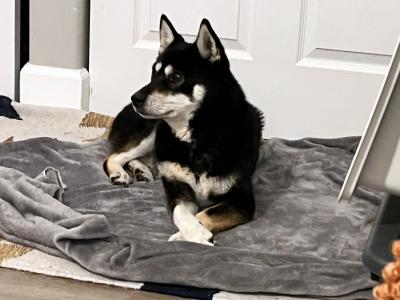
Give them the best day, week or lifetime ever
For a homeless pet, there’s not much better than finally having a family. And you can give them that.
Read more
Anxious dog gives peace of mind to his new person